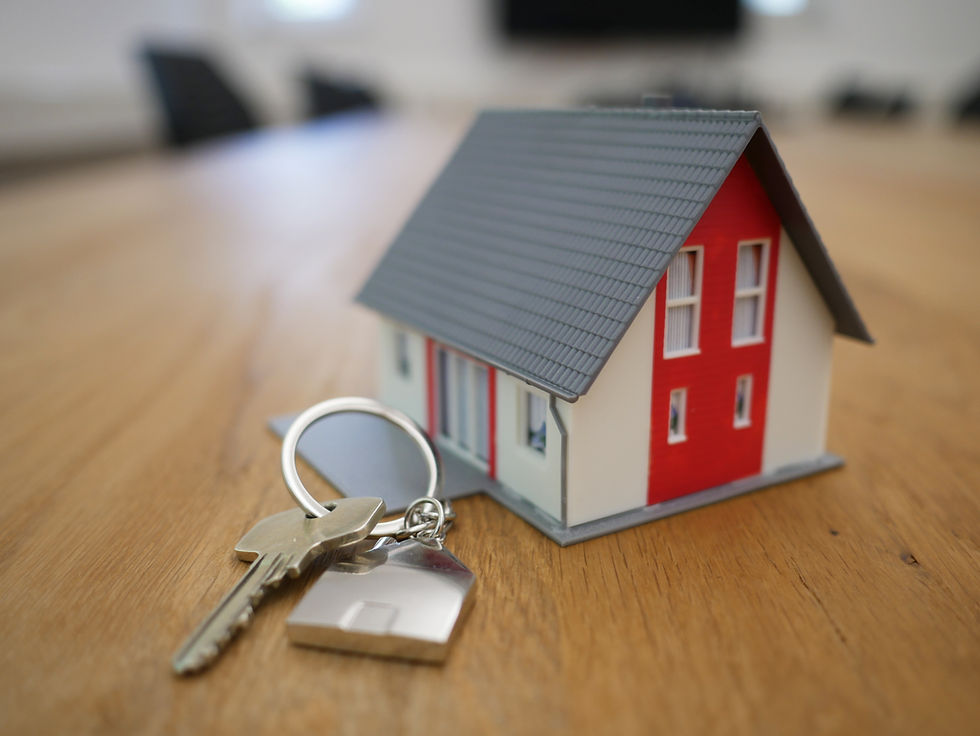Buying a House vs Buying a Home
- Hugh F. Wynn

- Nov 19, 2020
- 4 min read
There’s an old saying, “No one gets rich buying and selling a house or two.” It might be hard to hear this about your most costly asset, but it's important to face the facts about the downsides of owning residential real estate.

However, lots of folks grow wealthy starting a business, investing in the stock market, or through seed investing (helping a family – or friend – entrepreneur). Only after making some meaningful dough in one of those other ventures should families invest in real estate (in my opinion).
Real Appreciation
Yeah, I know, you hear all kinds of stories about how much homes appreciate, but keep in mind that those stories emanate from the real estate hot spots. Fact of the matter is, from a return on investment standpoint over time, if you’re lucky, your home will appreciate a bit over the rate of inflation. According to bankrate.com analysts, if you purchased a home in 2010 for $400,000, 10 years later it would be worth about half a million. And $80,000 of that number would likely be inflation. During that same decade, an S&P 500 index fund would have doubled in size. In short, you would need to have been employed and bought a home in a booming residential hot spot for it to have doubled in value. I’d call that being lucky twice.
It might be hard to hear this about your most costly asset, but it's important to face the facts about the downsides of owning residential real estate.
Costly Fees
On top of the list is the risk factor. A house locks up a good portion of most families’ net worth that just isn’t very liquid if they need quick cash. In the buying and selling of homes, you also have many “partners”. First on the list are the "Wazoos" that hang around being helpful when folks are buying or selling homes - the real estate agents, home inspectors, lawyers, mortgage brokers, possibly an accountant, and other fee generators that pop up on that lengthy settlement statement. They claim their services to be essential, and they certainly aren’t free. Just as a gentle reminder, it costs almost nothing to buy and sell stocks and mutual funds these days… and the carrying cost of most paper investments (other than dollar erosion) is close to zero.
Nickels and Dimes
Speaking of carrying costs, the annual upkeep of your palace is somewhere in the range of 1% per annum excluding property taxes. Remember, those air conditioning and heating units eventually wear out and that water heater occasionally starts running cold, not to exclude homeowners’ insurance and those small items that nickel and dime you to distraction. A gallon of paint costs WHAT? And don’t forget those aforementioned property taxes that can run 3% and more per annum in… ahem… “low tax” states. You can bet your boots that states with low income tax or low sales tax rates will have healthy (high) property rate rates. And, of course, remember those subdivision association fees that build and maintain courts and pools for the 10% of residents who demand top-notch recreational facilities.
Quality of Life
For those of you who are trying to decide between adding value to your quality of life versus enhancing the value of your “investment," you’d best place the emphasis on quality of life value. More often than not, that upgraded kitchen or bathroom, or the addition of a pool or hot tub simply drains cash from your balance sheet. Come that inevitable sale, such capital investments are rarely recouped. Yes, there are examples of profitable homes – often resulting from the presence of a long term dependable renter or a mom and dad toting the mortgage note – or a home’s market value actually appreciating substantially more than inflation – but don’t spend that “appreciation” until it’s resting in the bank.
Needs vs. Wants
It is wise to consider buying a house more in line with what your family needs rather than what they desire… and investing the “savings” in one of those options mentioned earlier (e.g., starting a business, investing in the stock market, or seed investing).
In short, skip that extra bedroom, that formal living room, that extra-large game room, etc. Five hundred square feet of space not bought at $100/sf is $50,000 that could earn the family several hundred thousand dollars during the life span of a mortgage. For example, you could realize a cost savings of $90,000 over a 30-year span on a $300,000 home vs a $350,000 home (assume paying 20% down on a 3.125%, 30-yr mortgage plus associated HOA insurance and property taxes). Then take the savings and earning 6% on an investment of $139 per month for 30 years ($136,000), compounded annually.
Another rule of thumb to keep in mind: In order to leave enough money to live on, spend no more than 3.5 times your annual income(s) after making a 20% down payment on a home… even less if the family has significant other debt or recurring expenses.
Investment Overkill
Just bear in mind that when house hunting it’s risky to shop with “investment” (rather than “home buying”) in mind. That investment proclivity encourages one to acquire features that “might” later help sell the house instead of what best fits the family in the here and now – a tendency that encourages folks to overpay for square footage that doesn’t fit the family’s needs today.
Yes, any home appreciation will help offset spending power erosion over time, but there are other investment opportunities that will get you to the same place… plus a bit more. Spend wisely when buying a home.






Yorumlar